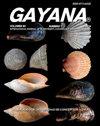IF 0.2
4区 生物学
Q4 ZOOLOGY
引用次数: 0
摘要
在智利的实验室里,科学家们研究了两种蚂蚁(Camponotus morosus Smith和Linepithema humile Mayr)之间的封闭行为,这是一种隔离蚁群的行为。从5个蚁巢和5个蚁巢中取蚁,将其中一个蚁巢的10个个体转移到另一个蚁巢。记录10 min内的触角探查(AE)、下颌骨开口(MO)、腹背外翻(DFA)、咬伤(Bi)、腹腹外翻(VFA)、打斗(fi)、入侵蚂蚁运输(TI)、向后移动(MB)、死亡(De)等行为,共10次重复。每个事件的发生次数±SD采用学生t检验进行分析。AE、MO、DFA和MB事件在接收L. humile时潜伏期较短,而C. morosus在接收Bi、VFA和Fi事件时潜伏期较短。采用χ2分析各事件发生频率,AE和MO在两个物种中相似,在DFA、Bi、VFA、Fi、MB、TI和De等攻击和排斥事件中,morosus的发生频率高于L. humile。从这些结果来看,morosus是一种比L. humile更封闭的蚂蚁。本文章由计算机程序翻译,如有差异,请以英文原文为准。
Hermetism between Camponotus morosus Smith and Linepithema humile Mayr (Hymenoptera: Formicidae)
Hermetism, a behavior that isolates ant colonies, was studied in the laboratory between two ant species in Chile, Camponotus morosus Smith and Linepithema humile Mayr. Ants from fi ve nests of C. morosus and L. humile were used, transferring ten individuals per nest of one of the colonies to receiving nests of the other. Conducts, including antennal exploration (AE), mandible opening (MO), dorsal fl exion of the abdomen (DFA), biting (Bi), ventral fl exion of the abdomen (VFA), fi ght (Fi), transport of the intruder ant (TI), moving backwards (MB), and death (De) were recorded during ten min, with ten replicates. The times of occurrence ± SD of each event were analyzed with the Student t test. The events AE, MO, DFA, and MB had a short latency time in receiving L. humile, while C. morosus presented lesser latency for the events Bi, VFA, and Fi. When analyzing by χ2 the frequency of occurrence of each event per species, AE and MO were similar in both species, and in aggression and rejection events like DFA, Bi, VFA, Fi, MB, TI, and De, there were greater frequencies of observations in C. morosus that in L. humile. From these results, C. morosus is a more hermetic ant than L. humile.
求助全文
通过发布文献求助,成功后即可免费获取论文全文。
去求助
来源期刊

GAYANA
Agricultural and Biological Sciences-Aquatic Science
CiteScore
0.60
自引率
0.00%
发文量
5
期刊介绍:
GAYANA is a scientific journal published by Universidad de Concepción, Chile. It is the modern version of Gayana Oceanología and Gayana Zoología. Therefore its numeration starts at volume 63(1).
GAYANA covers all aspects of zoology and oceanographic research. It is structured in five sections, defined by subject or discipline: Ecology, Biodiversity and Taxonomy, Earth Sciences, Evolutionary, and Applied Biology and Environmental Biology. Each section is in charge of an editor who receives and manages the manuscripts sent for evaluation in close collaboration with the editorial board.
 求助内容:
求助内容: 应助结果提醒方式:
应助结果提醒方式:


